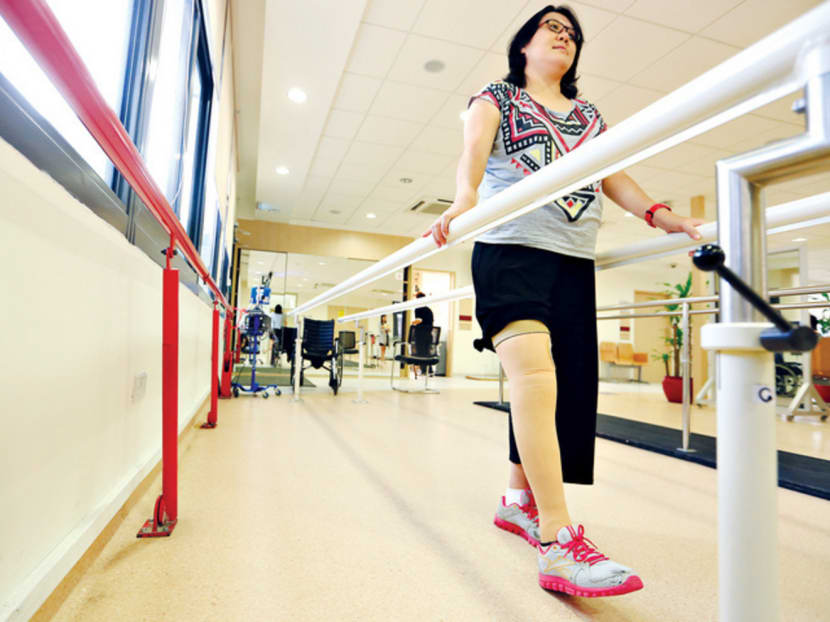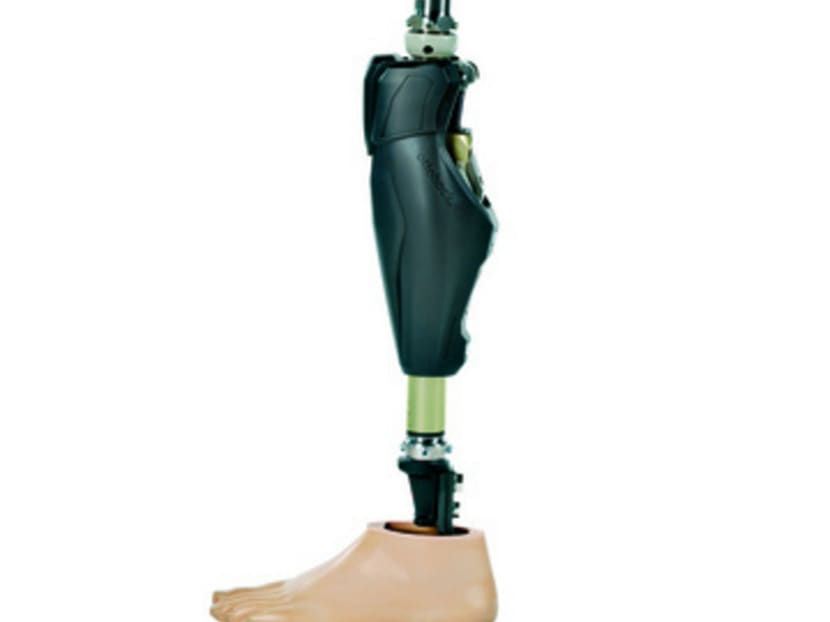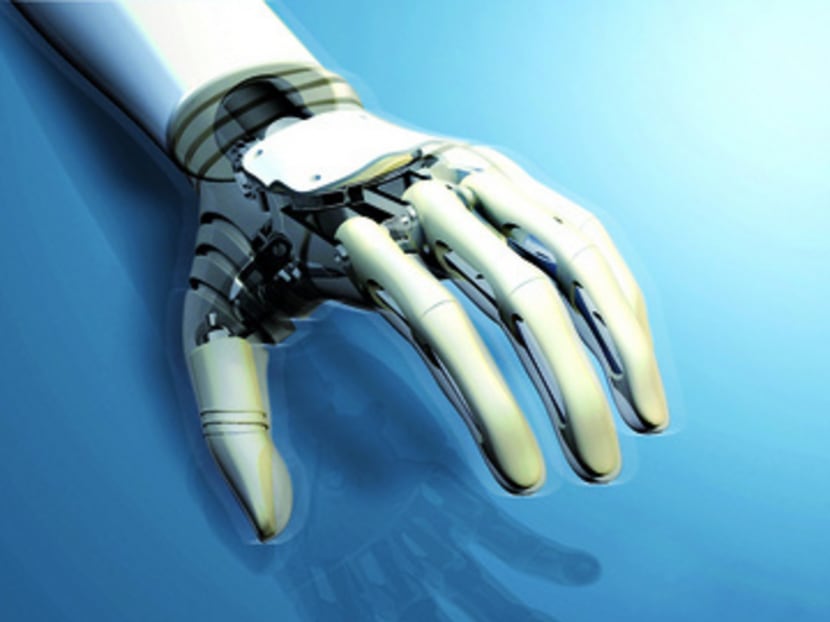Amputees enabled by computerised prostheses WHAT’S NEW?
X3 Leg



X3 Leg
One of the most advanced microprocessor knees, the waterproof computer-controlled X3 Leg by Otto Bock South East Asia Company intuitively adjusts its settings to provide a safe and natural gait, allowing users to engage in casual walks as well as adventure sports.
Michelangelo Prosthetic Hand
Also by Otto Bock, this bionic hand works on myoelectric technology (not driven by the muscle strength of the patient, but with the aid of electric power), allowing users to grasp and hold objects with greater control. Featuring a thumb that can be positioned electronically, this prosthetic hand offers seven grip types, including open palm and a powerful key grip.
SINGAPORE — Last year, a life-threatening gangrene in 39-year-old diabetic Joyce Chan’s right leg left her with one option: Limb amputation.
Thanks to advances in prosthetic technology, the former insurance broker and paralympian is now using a custom-made prosthetic leg and has no problem walking, bending and sitting. She is still learning to control her artificial limb, and is able to climb stairs with some support.
She is also training to compete in the 8th ASEAN Para Games at the end of the year.
Ms Chan’s artificial limb was put together at Tan Tock Seng Hospital’s Foot Care and Limb Design Centre (FLC), which imports parts and assembles customised prostheses for amputees.
The new generation of prostheses has allowed more patients to achieve independent lifestyles, said Professor Alberto Esquenazi, chair of department of physical medicine and rehabilitation at MossRehab and Albert Einstein Medical Centre in the United States.
“The new (prosthetic) devices allow users more freedom of movement and the ability to handle more complex tasks. They are more powerful and reliable when used on uneven surfaces, inclines and rough terrain,” said Prof Esquenazi.
He will be in town to speak at the Singapore Rehabilitation Conference (SRC), which is taking place at RehabTech Asia 2015, a conference and trade show, from tomorrow to Saturday.
An example of a high-tech prosthesis is the microprocessor-controlled knee, which collects and analyses data as the amputee walks, said Mr Trevor Bindell, head of department and senior prothestist and orthotist at TTSH’s FLC.
The data enables the knee prosthesis to cater to different walking speeds, recover from a stumble, or walking up and down the stairs, said Mr Bindell.
Mr Joseph Lim, senior prothestist and orthotist at FLC, added that some microprocessor knees even incorporate programmable modes such as locking the knee for standing for long periods of time and free swinging the knee when cycling.
Also available is the microprocessor ankle, which collects data while the person is walking and adjusts its angle according to the surface. This allows the amputee to walk up and down slopes with little energy and in a safe manner, said Mr Lim.
These high-tech, microprocessor-controlled prostheses may cost anywhere between S$30,000 and S$150,000, said Mr Bindell.
LOSING A LIMB TO DIABETES
Foot infections or gangrene are the most common complications that might arise from poorly controlled diabetes, said Dr Kim Jong Moon, consultant at the Department of Rehabilitation Medicine at TTSH.
Gangrene is a potentially life-threatening situation that occurs when parts of the body’s tissue die because of a lack of blood flow or infection. When that happens, limb amputation is required.
According to Dr Kim, about 0.4 per cent of diabetics undergo lower limb amputation. In TTSH last year, about 150 diabetes-related lower-limb amputation surgeries were conducted.
Diabetics are prone to foot infections because they experience poor circulation and nerve damage, said Dr Ben Ng, consultant physician and endocrinologist at Mount Elizabeth Novena Specialist Medical Centre.
“When the foot’s sensation is lost, the foot is more prone to injuries. Furthermore, poorer blood supply results in wounds taking much longer to heal and the high blood sugars in open wounds make them more susceptible to bacterial infection,” said Dr Ng.
RETHINKING PRIORITIES
For Ms Chan, losing a limb has made her rethink her priorities.
“I realise that health is very important, which is why I’m thinking twice about going back to my former high-stress job,” she said.
In the meantime, Ms Chan has picked up archery and is training for the ASEAN Para Games, which will take place at the end of the year. She would like to encourage fellow amputees to look beyond their disabilities.
“We should never feel we are less than an able person just because we have lost a limb. If we train hard enough to walk with our prosthetic leg, we will walk again one day,” she said.





